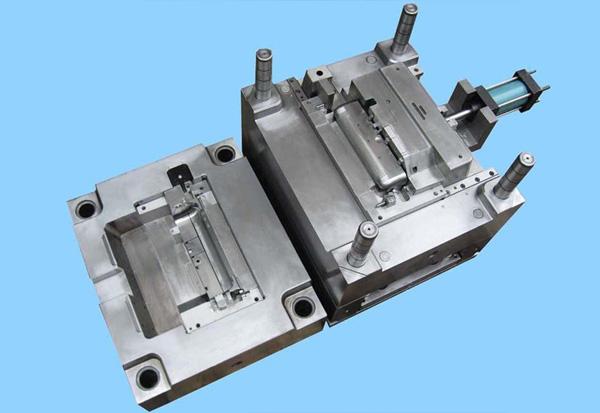If you need plastic injection molded parts or extrusions, read this article featuring plastic extrusion and injection molding characteristics, difference between plastic extrusion & injection molding.

Plastic Extrusion
Extrusion molding is a kind of processing method in which the material is pushed forward by the screw while it is heated and plasticized by the action between the barrel and the screw of the extrusion machine, and continuously passes through the head of the extrusion machine to make various cross-section products or semi-finished products.
Extrusion is used in the processing of thermoplastic and rubber, used for batching, granulation, rubber filtration, etc. and can be used for continuous production to produce various continuous products, such as pipe, profile, plate, film, wire and cable coating, rubber tire noodles, inner tube tube, sealing strip, etc., with high production efficiency. The extrusion machine is composed of extrusion device, transmission mechanism, heating and cooling system. There are two types of extrusion machines: screw type and plunger type). The extrusion process of the former is continuous and the latter is intermittent.
Injection Molding
Injection molding is a manufacturing process for producing parts by injecting molten material into a mould. There are special mechanical injection molding machines for injection molding. The most commonly used plastic at present is polystyrene. The resulting shape is often the final product and no further processing is required before installation or use as the final product. Many details, such as bumps, ribs, and threads, can be molded in one step of injection molding.
Plastic Extrusion Vs Injection Molding – Differences Between Plastic Extrusion And Injection Molding
Comparison Of Raw Materials
● Differences in liquidity. Injection molding requires high fluidity, especially for thin-walled products and large-scale products. The extrusion requirements are more relaxed, because the extrusion is open type, there is no huge resistance of reverse mold.
● Melt Strength. Injection molding is in the mold, there is a geometric limitation of the mold composition, the melt strength is not required high. Although there are geometric limitations of die in extrusion process, it is not cured completely after the die is exported. In this free state, it can not be well formed due to low melt strength. Extrusion is often accompanied by subsequent free state processing, such as hot forming, hollow blow molding. In these molding processes, there are different degrees of melt stretching. If the melt strength is low, it is easy to break. Therefore, injection molding generally does not require high melt strength, while extrusion is generally required.
● Export expansion. Generally, there is no strict requirement for the exit expansion of injection molding, which will cause great problems. Therefore, the viscoelastic control of injection molding and plastic extrusion materials will be different.
● Raw materials application. For plastic extrusion, most of the thermoplastic plastics and some thermosetting plastics, such as PVC, PS, ABS, PC, PE, PP, PA, acrylic resin, epoxy resin and melamine resin, etc. In terms of injection molding, except for a few thermoplastics, almost all thermoplastics can be molded by this method. Injection molding can also process some thermosetting plastics, such as phenolic plastics.
Depend On The Shape
The part that should be made by extruding/extrusion can be lasted/extended. Just like noodles, long, and you can push it out without an ending, parallel.
The part that should be made by injection molding is usually one end bigger and one one smaller. Because for injection molding, mold draft should be applied. No 90 degree, no parallel.
Characteristic Comparison
Extrusion molding:
– High efficiency, continuous production of plastic parts;
– The mold structure is simple, easy to manufacture and maintain, less investment and quick effect.
– The internal structure of the plastic part is balanced and compact, and the size is relatively stable and accurate.
– It has the advantages of wide application range, simple operation equipment, less investment, quick effect, hygienic production environment and low labor intensity, which is suitable for mass production.
Injection molding:
– It can be used for injection molding of various complicated plastic products.
– The structure and size of the products are accurate and the surface quality is good.
– Injection molding products can be standardized and serialized.
– The operation is simple, full automation production can be adopted, and the production efficiency is high.
– The production cycle is short.
